A blog about how-to, internet, social-networks, windows, linux, blogging, tips and tricks.
03 August 2018
The 10 Best Legal YouTube Live Channels for Cord Cutters
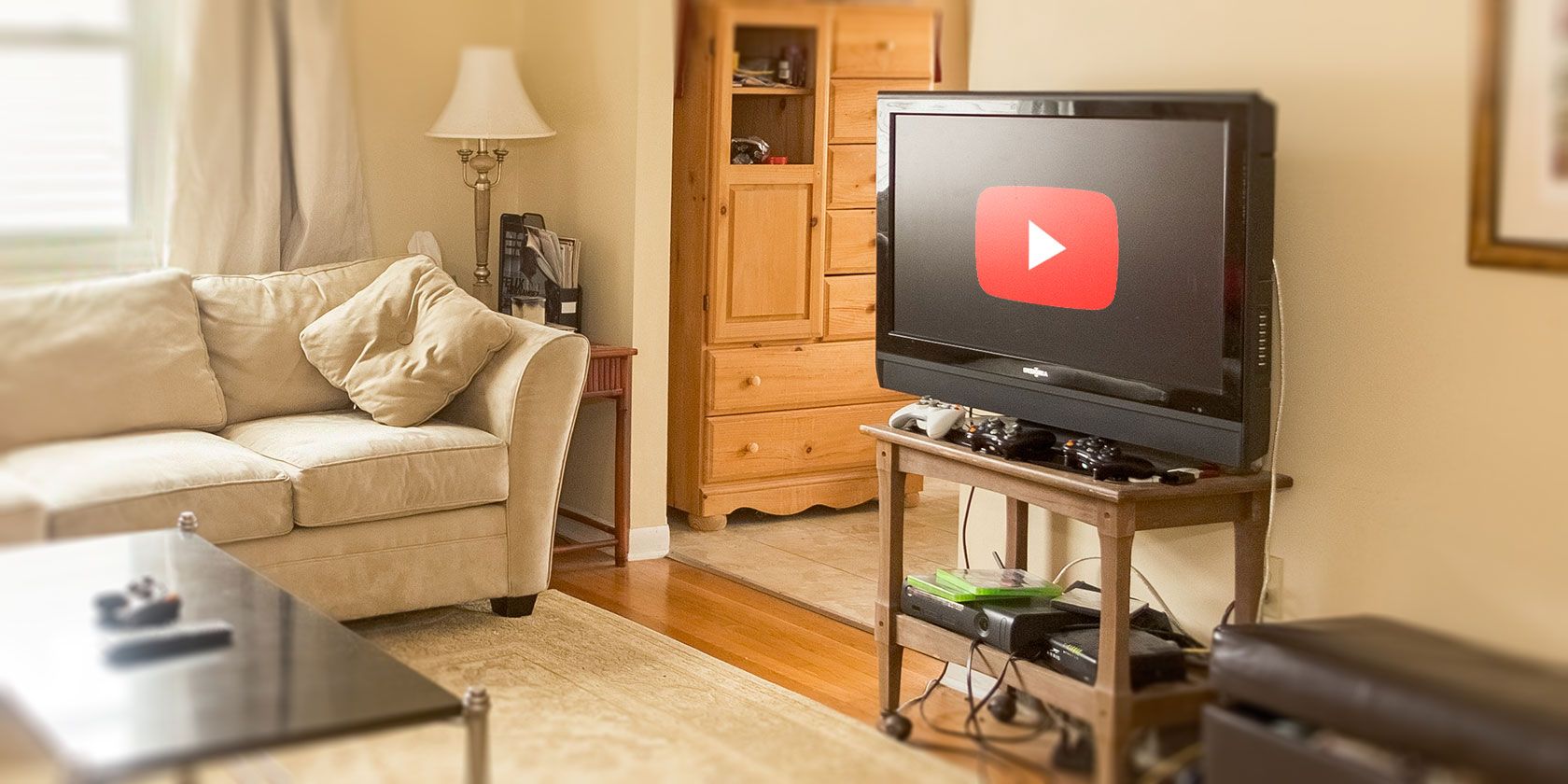
A great—and often overlooked—way to watch live TV is to use YouTube. Since the company began to offer live streaming in May 2013, several TV networks have started to offer 24/7 feeds of their channels.
Here are some of the best live channels on YouTube that every cord cutter should be using.
Note: Do not confuse the channels in this article with those offered through YouTube TV, YouTube’s OTA streaming subscription service.
1. Sky News
Sky News is a UK-based 24/7 news channel that’s been on the air for almost 30 years.
The YouTube channel is the international version of the network. The content is identical to that which broadcasts in the UK, but there are no British ads. Instead of ads, you’ll see frequent global weather updates.
The channel primarily reports on world headlines, business, sport, entertainment, and other trending stories.
2. NASA Live
NASA Live is a US government-funded TV channel. It offers a mix of live feeds from satellites, educational content, and pre-recorded space-themed TV shows. You will also find live footage of spacewalks, launches, and press conferences.
Because NASA TV is a public domain channel, anyone can broadcast it. However, the YouTube channel is an official feed from the government agency.
The channel is on air 24/7.
3. Bloomberg Global News
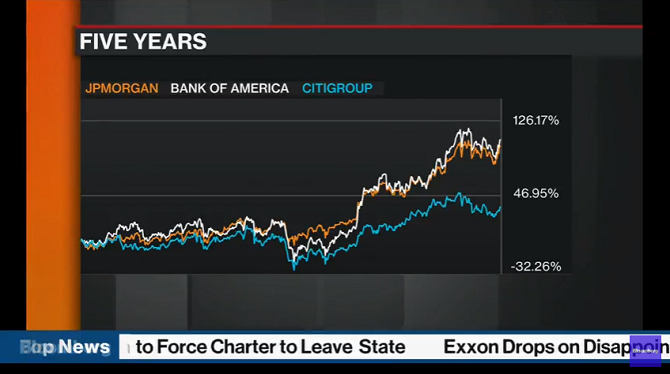
Bloomberg is one of the most famouse names in the business sector. If you want to keep abreast of market information, financial news, economic reports, and the latest political headlines, this is the channel for you.
Bloomberg is the only one of the major business channels that makes its content freely available. The others—such as CNBC and Fox Business Network—require a cable or satellite subscription.
You’ll also find plenty of on-demand content in Bloomberg’s YouTube archives, making it easy to catch up on your favorite show if you missed it.
4. Talking Tom and Friends
Here’s one for the kids. For the uninitiated, Talking Tom and Friends started life as an app which featured anthropomorphic animal characters repeating things said by the user.
After early success, the franchise grew. There are now 10 TV episodes, almost 60 minis, and more than 45 shorts. All the video content is replayed on a randomized loop on the official YouTube TV channel.
The channel’s guidance says the content is only suitable for children who are at least six years old.
5. Al Jazeera
The Qatar-based Al Jazeera is one of the largest news organizations in the world. The network has bureaus in more than 80 countries.
Thanks to agreements with CNN and the BBC, content that’s been sourced and recorded by Al Jazeera is heavily used in western media. The network also owns beIN Sports. It broadcasts premium sporting events across much of Europe and the US
The English-language channel went live in 2006. It quickly signed up several big names from the world of journalism, including David Frost and Josh Rushing.
Despite some prejudices, Al Jazeera has fostered a reputation for offering balanced and fair reporting on global news.
6. FashionTV
If you want to keep up with the latest catwalk trends and global fashion news, you need to watch FashionTV. The channel boasts 400 million daily viewers around the world.
Typical content includes videos from fashion shows, interviews with models, footage from exclusive fashionista parties, and behind the scenes content from the world’s runways.
You also get exclusive videos from the world’s biggest fashion events, including the Madrid Fashion Week, Paris Haute Couture, and the Milan Fashion Week.
7. France 24

France 24 is a state-owned TV channel located in Paris.
The content offers a 50/50 split between live news and pre-recorded magazine shows. The subject matter of the magazine shows varies between global stories and programs focused on France and French issues.
In addition to the English-language feed linked above, the channel also broadcasts in French, Spanish, and Arabic.
8. QVC
QVC is the largest television shopping channel in the world. It’s been on the air for more than 30 years and is broadcast in US, UK, Germany, Italy, France, Japan, and China. The YouTube version of the channel is available globally.
You won’t often find products from mainstream retailers, but if you’re looking for kitchen utensils, garden tools, jewelry, and unbranded clothing, you can find some great deals.
9. Milenio
If you would like to keep up with news south of the border, check out the official Milenio channel.
Milenio started life as a newspaper in the northern Mexican city of Monterrey in the 1970s. In 2008, the company launched Milenio Televisión. The channel is on air 24/7 and broadcasts a mix of news, analysis, and specialist programming.
The company also produces newscasts for the greater Los Angeles area. They are available on-demand in the YouTube channel’s video archives.
10. Peppa Pig

We’ll leave you with another channel for the children in your life. Peppa Pig is a popular kids TV show that follows the life of Peppa, George, and a large ensemble of other farm animals.
Since first hitting British TV screens in 2004, the series now includes more than 200 episodes. There was even a 15-minute short film which grossed more than $2.5 million. The show is syndicated across most of Europe and North America, as well as in many parts of Asia.
The official Peppa Pig YouTube channel screens episodes on repeat around the clock. If you’re ever stuck for ways to entertain your kid, you can’t go far wrong with this one.
Other Ways to Watch Live TV Beyond YouTube
These YouTube live channels will provide you with a solid mix of news, education, entertainment, and kids’ programming. Best of all, they’re entirely legal. You can occasionally find streams from networks like BBC and ABC, but they’re not official; YouTube removes them within minutes.
Of course, there are lots of other ways that cord cutters can access legal streams of live TV. We’ve previously looked at many of them. Depending on your setup, you can use some of the best Kodi add-ons, unofficial Plex channels, or free Roku channels.
Read the full article: The 10 Best Legal YouTube Live Channels for Cord Cutters
Read Full Article
Qualcomm Snapdragon 845 Phones: Should You Upgrade?
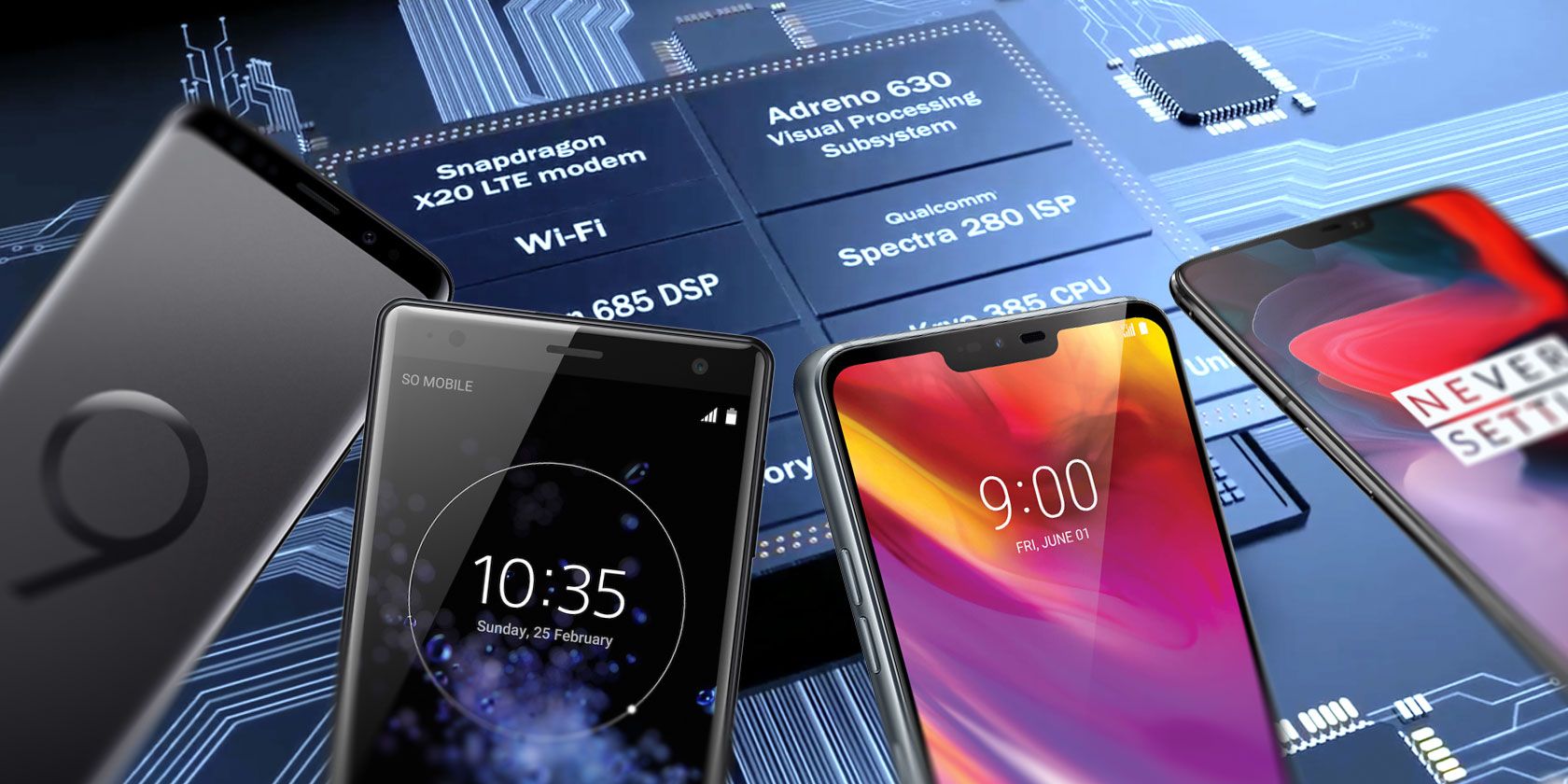
Every year, smartphones get faster and more powerful. But that’s not all that happens.
The Snapdragon 835 processor was all about battery life. 2017 high-end phones weren’t just fast and sleek—many could actually hold a charge for the entire day.
So what’s special about the newer Snapdragon 845?
Qualcomm Snapdragon 845 Features
Qualcomm introduced the Snapdragon 845 to the world in December 2017. Here’s some of what the company promised:
An AI platform: Smart assistants are popping up everywhere. The Snapdragon 845 better supports on-device AI processing, reducing the need to offload effort onto remote servers.
Better photos: The Snapdragon 845 debuts an all-new, second-generation Spectra 820 Image Signal Processor. Look for improved multi-frame noise reduction (think of the Google Pixel 2’s HDR+ mode). The chip can capture up to 60 16MP images per second. Other enhancements include better electronic image stabilization.
More video options: The new chip offers built-in support for both slow-motion video and high-speed performance capture. There’s also HDR recording and the ability to superimpose a still image on a moving background.
Faster speeds: The Snapdragon 845 offers a Kryo 385 CPU on Cortex-A75 (with clock speeds up to 2.8GHz) and Cortex-A55 cores. One handles power, while the latter is for efficiency. The Adreno 630 GPU also saw improvements to power and efficiency, which will help with pushing out pixels. So unless Android and apps require more power this year, you can expect the next round of flagships to offer faster performance.
A focus on extended reality: Manufacturers are using already using mobile chipsets such as the Snapdragon 835 to develop the current generation of virtual and augmented reality. The Snapdragon 845 integrates a parallax-based depth-sensing system that can judge the distance of objects using two lenses, much like human eyes. It can manage a higher resolution per-eye in VR headsets, supporting up to 2K x 2K at 120 frames per second.
Faster download speeds: Your internet service provider can pump blazing speeds into your home, and your mesh Wi-Fi may be able to handle it, but that doesn’t matter if your phone can’t. Snapdragon 845 brings support for peak download speeds of 1.2Gbps.
Increased security: The Snapdragon 845 uses a new Qualcomm Secure Processing Unit that provides vault-like security for personal data. Phones can also store biometric data used for authentication in isolation.
Note that these are only Qualcomm’s promises. Actual experience also depends on how well manufacturers implement the chipset into their phones. (If I lost you at some point along the way, see our article on understanding smartphone jargon.)
Notable Phones With Snapdragon 845
The Snapdragon 845 is what manufacturers are cramming inside their best phones of 2018. All these devices range from $500 to $1,000. Here are some to keep in mind.
Samsung Galaxy S9 and S9+
Samsung develops its own competing Exynos 9 Series 9810 chip for the Galaxy S9, but in the US, the phone uses the Snapdragon 845. Samsung’s Galaxy S9 and S9+ were the first phones to bring the Snapdragon 845 to market.
Notable features include a Quad HD+ Curved Super AMOLED display, improved dual 12MP rear-facing cameras (capable of capturing super slow-motion video), and a fingerprint sensor that’s in a more convenient location compared to last year’s model. Unlike many other flagships, the S9 still has a 3.5mm headphone jack.
What to know more? Here’s an in-depth look at what the Galaxy S9 and S9+ bring to the table.
Sony Xperia XZ2, XZ2 Compact, and XZ2 Premium
The Xperia XZ2 line offers Snapdragon 845-powered phones that look much different from previous generations. Its glass back has a curve that makes it a bit wobbly on flat surfaces, but it does support wireless charging.
The XZ2 and XZ2 Compact both offer HD+ displays, which in this case means 2160 x 1080. Meanwhile, the XZ2 Premium comes with a bigger 4K display, plus a larger battery. There’s also support for super slow-motion video recording.
While the two smaller models provide a single 19MP rear camera, the Premium edition comes with not one rear camera, but two.
Interested? Our Xperia XZ2 review has a lot more to say.
LG G7 ThinQ and V35 ThinQ
LG’s Snapdragon 845 flagship phone offers a 6.1-inch QHD+ (3120 x 1440) display. It comes with a top notch akin to that of the iPhone X, Essential Phone, and other high-end devices. It is the second LG device to use the ThinQ branding.
ThinQ is pronounced as “thin Q” (not “think”), but it nonetheless has a dedicated button for Google Assistant. It also communicates with LG appliances. Plus, there’s an AI Cam that tries to harness machine learning to improve your pictures.
If you don’t like notches, go for the V35. It has an OLED screen (versus the G7’s LCD). You do give up the dedicated AI button, in case that’s something that matters to you.
OnePlus 6
People turn to OnePlus to get top-quality specs at a relatively low price, and this year’s model delivers as usual. You get a 2280 x 1080 AMOLED display, at least 6GB of RAM, 20MP and 16MP rear cameras, plus a minimum of 64GB of storage. The top model offers 8GB of RAM and 256GB of storage.
There’s a notch at the top of the the display, as is now common. The frame is made of metal, while the back has Gorilla Glass.
HTC U12+
HTC designers appear to have had some fun with this year’s flagship. The U12+ comes in several colors, one of which is a translucent blue that shows some of the phone’s interiors.
The device lacks any physical buttons. Instead, you have pressure-sensitive buttons that provide tactile feedback. Like the Pixel 2, you can squeeze your phone—only HTC has added in gestures such as holding and tapping.
But That’s Not All
The above brands are the major brands here in the US, but other companies have embraced the Snapdragon 845 this year. Xiaomi has the Mi Mix 2S. Asus has shipped the ZenFone 5Z as well as the distinct Republic of Gamers smartphone.
You can also expect the Google Pixel 3 to join this list after its presumed launch sometime in the fall.
What About the Snapdragon 855 and 1000?
The Snapdragon 855 is what we expect to see in next year’s flagship phones. The 845 maintains a 10-nanometer design like the 835 before it, while the 855 is expected to become the world’s first 7-nanometer chip to enter mass production. Look for improved performance and energy efficiency when Qualcomm makes an announcement at the end of this year.
Meanwhile, a Snapdragon 1000 chip is in the works not for phones, but for PCs. Microsoft wants to see Windows on ARM devices due to the faster boot times, longer battery life, and better connectivity.
This won’t be the first Snapdragon chip inside a Windows computer, as the 1000 follows both the 835 and the 850. However, more information isn’t expected to arrive until at least next year.
Should You Upgrade to the Snapdragon 845?
How’s your current phone? If you have a device with the Snapdragon 835 that still does everything you need, hold on to it. Sure, the Snapdragon 845 may be better, but (more than likely) so will the Snapdragon 855.
If you have an older phone, or if you play a lot of demanding games, you won’t go wrong grabbing the Snapdragon 845—assuming you’re prepared to spend at least $500 on a phone.
Read the full article: Qualcomm Snapdragon 845 Phones: Should You Upgrade?
Read Full Article
Goodly looks to give companies student loan payments as an employee benefit
As employers duke it out over hiring the best possible candidates, especially ones coming out of school, they are starting to get a little bit more creative with their incentive packages — and that includes offering an option for paying down student debt.
Goodly is a new startup that’s looking to help those employers offer that as a benefit. Smaller companies without the resources to create complicated incentive packages especially need tools that help shortcut the process of offering those benefits. It’s following a similar playbook of companies looking to make it easier to get the tools they need in place and focus more on the set of products that are going to make it an actually differentiated company. Goodly is launching out of Y Combinator’s summer class this year.
“We found it to be a really great tool for recruiting and retaining,” co-founder Gregory Poulin said. “When people hear student loan benefits, they instantly think it’s very expensive. You can offer student loan benefits starting $25 to $50 per employee per month, up to $200. Our system is completely flexible. You can offer any company size for any budget. You can offer meaningful benefit for less than the cost of a cup of coffee a day. For the average borrower, when they have an employer contributing an extra $100 per months, it could help your average employee get out of debt almost a decade faster.”
There are more common benefits like stock packages, 401(k) matches, insurance, better time off policies, or others along those lines. But as student debt increasingly becomes a factor in a candidate’s decision on where they work, it’s another way that companies — ones without larger compensation packages or very aggressive recruiting operations like, say, Google or Facebook — can still get the attention and interest of good candidates coming out of school. Like other companies (like Human Interest for 401(k)s, for example), the goal is to make it easy to get started and maintain the whole process.
Employees connect their student loans to Goodly, which takes a few minutes to verify them before setting up the contribution plan. Goodly integrates with payroll operations and gives companies and employees a pretty flexible way to set their spending schedule. Then, it goes from there, without the employees having to manage it on a per-period basis. While it might have the robust tax incentives in place like a retirement plan, it’s still a way to help companies offer some way of showing employees that they’re invested in their employees’ future success, which is another way that those companies might be able to retain that talent. Goodly then brings back detailed reports on the company’s implementation to help it better understand whether the policies are working for their employees.
It’s certainly an area that’s attracted interest — and funding — from a number of startups like Tuition.io which look to help employers get a little more creative about their benefits. Much like contributions to retirement plans, it’s another way to offer employees a way to invest in their future by reducing the financial stress they have through some of their biggest financial decisions like where to go for college. Poulin also said it’s a way to help discover a more diverse talent pool as it surfaces up underrepresented parts of the population that are acutely dealing with student debt as a factor in their decision-making.
Read Full Article
Portal offers an easy way to pay creators for their content
Portal founder Jonathan Swerdlin is just the latest media pundit to point to advertising as the root cause of the industry’s problems. But he’s not content to diagnose the illness — he thinks he’s created a cure.
“Digital media has become toxic, in part, because of advertising,” Swerdlin said. “The unmet and unarticulated need is a peer-to-peer economy where you’re rewarded for creating value, rather than a quantity model” where a publisher or creator’s main economic incentive is to attract as many eyeballs as possible.
Naturally, that’s what Swerdlin is trying to offer in Portal. When you open the app, you follow creators and topics that interest you, then get presented with a feed of videos. During or after the video, you can tip the creator in Portal coins — the current price is 1 cent per coin, and individual payments can be anything from 10 to 10,000 coins.
This changes the equation for creators. If you’re monetizing a video with ads, 1,000 views would represent a negligible amount of ad revenue — but if 1,000 people like the video and are willing to pay a dollar, then then you’re starting to talk about real money.
Conversely, there’s no financial incentive to post a video on Portal that gets a million views if everyone’s going to think it’s a complete waste of their time.

Swerdlin said removing advertising changes the incentives for Portal too, because the startup doesn’t benefit from promoting content just because it’ll get clicks.
In fact, he said Portal will pretty allow users to post anything, as long as it doesn’t violate community standards around things like pornography and hate speech. And it presents a purely reverse chronological feed of content based on what you follow — the question of surfacing interesting content in the feed will probably get more complicated as more users join the platform, but Swerdlin argued, “We don’t need algorithms to solve feed problems.”
“We’re not going to bury things that are not advertiser-friendly,” he added. “It’s a very different game. Portal is very much about people having a place to freely express themselves and not worry about being buried by an algorithm.”
Swerdlin acknowledged that these aren’t entirely new ideas or strategies — micropayments have been touted as a solution to media monetization for years, and he pointed to services like Netflix and Medium as offering models that help creators “break free of advertising.”
At the same time, Swerdlin said Portal’s approach to payments is truly offers “no friction” — it’s uses your App Store payment info, so you don’t even need to enter your credit information. He also said that by creating an app for content (rather than just a micropayment platform that plugs into existing websites), Portal can truly solving the problem by offering a media environment that’s “safe, it’s a healthy media diet, as opposed ot the juunk food.”
Currently, Portal’s content is limited to videos, but those videos cover a range of topics and genres like advice (personal- and business-related), comedy, music and personal vlogging. Over time, Swerdlin wants to expand to other content formats.
You also need an invite code to access the app, but if you want to try it out, feel free to use mine: “anthonyha”. (Don’t blame me; I didn’t choose it.)
Read Full Article
Portal offers an easy way to pay creators for their content
Portal founder Jonathan Swerdlin is just the latest media pundit to point to advertising as the root cause of the industry’s problems. But he’s not content to diagnose the illness — he thinks he’s created a cure.
“Digital media has become toxic, in part, because of advertising,” Swerdlin said. “The unmet and unarticulated need is a peer-to-peer economy where you’re rewarded for creating value, rather than a quantity model” where a publisher or creator’s main economic incentive is to attract as many eyeballs as possible.
Naturally, that’s what Swerdlin is trying to offer in Portal. When you open the app, you follow creators and topics that interest you, then get presented with a feed of videos. During or after the video, you can tip the creator in Portal coins — the current price is 1 cent per coin, and individual payments can be anything from 10 to 10,000 coins.
This changes the equation for creators. If you’re monetizing a video with ads, 1,000 views would represent a negligible amount of ad revenue — but if 1,000 people like the video and are willing to pay a dollar, then then you’re starting to talk about real money.
Conversely, there’s no financial incentive to post a video on Portal that gets a million views if everyone’s going to think it’s a complete waste of their time.

Swerdlin said removing advertising changes the incentives for Portal too, because the startup doesn’t benefit from promoting content just because it’ll get clicks.
In fact, he said Portal will pretty allow users to post anything, as long as it doesn’t violate community standards around things like pornography and hate speech. And it presents a purely reverse chronological feed of content based on what you follow — the question of surfacing interesting content in the feed will probably get more complicated as more users join the platform, but Swerdlin argued, “We don’t need algorithms to solve feed problems.”
“We’re not going to bury things that are not advertiser-friendly,” he added. “It’s a very different game. Portal is very much about people having a place to freely express themselves and not worry about being buried by an algorithm.”
Swerdlin acknowledged that these aren’t entirely new ideas or strategies — micropayments have been touted as a solution to media monetization for years, and he pointed to services like Netflix and Medium as offering models that help creators “break free of advertising.”
At the same time, Swerdlin said Portal’s approach to payments is truly offers “no friction” — it’s uses your App Store payment info, so you don’t even need to enter your credit information. He also said that by creating an app for content (rather than just a micropayment platform that plugs into existing websites), Portal can truly solving the problem by offering a media environment that’s “safe, it’s a healthy media diet, as opposed ot the juunk food.”
Currently, Portal’s content is limited to videos, but those videos cover a range of topics and genres like advice (personal- and business-related), comedy, music and personal vlogging. Over time, Swerdlin wants to expand to other content formats.
You also need an invite code to access the app, but if you want to try it out, feel free to use mine: “anthonyha”. (Don’t blame me; I didn’t choose it.)
Read Full Article
Google Maps is no longer #flatearth
Go to Google Maps and zoom out. Halfway out, the map’s perspective changes from a traditional flat map view to an interactive globe. Zoom all the way out and the Earth is presented as a globe with landmasses of the appropriate size. Greenland is no longer the size of Africa and all is right with the world.
On flat maps, it’s impossible to represent land mass size on a relative scale. Objects in the north and south become distorted as the the flat map compensates for the flattening of the globe. This is most evident in the commonly used Mercator projections that properly represents the size of land around the equator but super-sizes land in the Arctic and Antarctic.
Now, when Google Maps is used on Desktop, users will see the appropriate size of land masses. The update is great but I have yet to find the giant ice wall that’s preventing all of life from sliding off the side of the flat earth and onto the back of the giant turtle we’re riding through the vast emptiness of space.
With 3D Globe Mode on Google Maps desktop, Greenland's projection is no longer the size of Africa.
Just zoom all the way out at https://t.co/mIZTya01K3
pic.twitter.com/CIkkS7It8d
— Google Maps (@googlemaps) August 2, 2018
Read Full Article
Here’s how Airstream is updating the classic American travel trailer
Airstream has been making travel trailers for generations, and it seems the company is ramping up plans to bring connected technology to the product line. The company recently announced several new products that will bring new features expected by today’s consumers.
The iconic silver bullet trailers are a mainstay on America’s highways and byways. Trailers made today have the same classic lines as those made for past generations. For the most part, that’s not going to change. While Airstream has new two new trailers that slightly depart from the shiny aluminum exterior, they’re still Airstream trailers. And for the classic models, which can command prices over $150,000, Airstream is now equipping them with smart control technology that will let owners control various functions through a smartphone app.
Featured on initially the 2019 Classic models, Airstream’s Smart Technology puts a bevy of controls in a smartphone app. It lets owners control the majority of the trailers systems and monitor different levels from an app. Check the propane, water and battery levels from the app or control the awning from afar. The app even lets owners locate the trailer through GPS, in case, you know, you lose your $100,000 trailer among an RV lot of other $100,000 trailers.
“Airstream owners have long been bringing digital technology and the Internet of Things (IoT) into their trailers, often in very creative ways,” said Airstream Vice President of Product Development and Engineering McKay Featherstone, in a released statement. “So, it’s no surprise they embrace the idea of a smart trailer, a recreational vehicle that allows them to adventure with all the digital comforts and connectivity of home.”
Airstream also has two new travel trailers that bring the Airstream product line to lower price points. But without the silver bullet design.
An updated and more capable version of the smallest Airstream was just announced. Called the Basecamp X (pictured above), it’s designed to go places most Airstream trailers would scoff at. It’s more rugged and, frankly, cheaper than most Airstream models.
“Airstream is targeting outdoor enthusiasts with the Basecamp X,” Justin Humphrey, Airstream COO told TechCrunch. “They aren’t always younger, but they certainly index much higher in terms of outdoor activities they participate in a given year versus our more traditional buyers.”
He explained that Airstream built this model, not for a target age group but rather the outdoor enthusiast of any age. The Basecamp X’s features back up that claim, too.
The Basecamp X is a smaller trailer, with room for two to sleep comfortably. It has a 3-inch lift kit for added ground clearance and Goodyear Wrangler tires along with side skirts and wheel flares to help prevent damage. A large back door makes it easy to store kayaks or bikes inside the trailer. The smaller size allows mid-size SUVs or large crossovers to tow the trailer without much effort. The Basecamp X comes pre-wired for solar power, and there are a handful of USB charging ports and lockable gadget compartments. Prices start at $36,000, so while this might be the smallest Airstream, it still commands an Airstream price.

Announced earlier this year, Nest by Airstream is the most substantial departure from the classic Airstream. It’s built from fiberglass and for a good reason. Airstream did not start the development of the Nest. The company bought Nest Caravan in 2016, apparently in a bid to bring to the market a new, lower cost product line from Airstream.
Airstream says the Nest has a lot of the same character found in the Classic trailers but at a lower cost. It sleeps up to two people and has a floor plan similar to Airstream’s base Sport model. But it’s lighter and is loaded with more modern conveniences.
It’s clear Airstream is attempting to reinvent itself while staying true to what made the company an icon. It’s a fine line many companies often walk. Stay in the past too long, and upstarts surpass the incumbent. Change too quickly and alienate current buyers. As long as Airstream keeps the innovations inside the silver bullet, the company should be just fine.
Read Full Article
Chinese tech stocks tumble from more than just trade tensions
Editor’s note: This post originally appeared on TechNode, an editorial partner of TechCrunch based in China.
Reports of trade tensions between China and the US in the past few months have been hard to ignore. In early July, the US imposed $34 billion on Chinese goods, prompting the Shenzhen Component Index, dominated by technology and consumer product stocks, to fall to its lowest point since 2014, igniting fears among investors.
“The U.S. tariffs, coupled with a falling yuan, will significantly increase the cost for many Chinese technology companies that rely on imported raw materials, such as semiconductors, integrated circuits, and electric components,” Zhang Xia, an analyst for China Merchants Bank Securities, told the South China Morning Post.
Additionally, the U.S. commerce department announced yesterday it will place an embargo on 44 Chinese companies—including the world’s largest surveillance equipment manufacturer Hikvision—for “acting contrary to the national interests or foreign policy of the United States.” The move caused the companies’ share prices to fall by nearly six percent.
However, the focus has shifted to more than just the trade war. And a number of big Chinese tech companies have seen their share prices plummet for other reasons.
Pinduoduo, China’s latest e-commerce giant to list on the Nasdaq, found that an initial public offering (IPO) is not a panacea. Conversely, its listing has drawn attention to the company’s counterfeit products. And investors are not happy.
Tencent’s shares have nosedived by over 25 percent since its peak in January, erasing $143 billion in market value over the past seven months.
Search giant Baidu also hasn’t been immune. The company’s stock price dropped by nearly 8 percent this week following news that Google plans to re-enter the Chinese market.
Government crackdowns
While IPOs are usually a cause for celebration, Pinduoduo has proven this past week they can also be bad for business. The company—which has integrated e-commerce and social media—caters to low-income consumers living outside first and second-tier cities. It has been plagued by accusations of facilitating the sale of counterfeit low-quality goods.
Just days after going public, its share price tumbled by 16 percent, falling below its offer price of $19. The drop was, in part, initiated by requests made by television maker Skyworth to remove counterfeit listings of its products from the e-commerce firm’s marketplace.
The company announced (in Chinese) this week that it had removed 10.7 million listings of problematic goods. However, this did little to assuage concerns from investors and regulators after the latter launched an inquiry into Pinduoduo’s product listings. Its stock price dropped to 30 percent below its closing price on its first day of trading, wiping out over $9 billion in value.
This is unlikely to be helped by the fact that seven U.S. law firms have launched investigations into the company on behalf of its investors. The statement issued by the firms shows that investors suffered financial losses after Chinese regulators began looking into the company’s dealings. The company met today with regulators and agreed to improve its products’ vetting procedures.
However, it’s not only e-commerce platforms that have been affected. Video streaming service Bilibili has seen its stock price drop by almost 21 percent since July 20. The decline comes amid renewed efforts led by the Cyberspace Administration of China (CAC) to crack down on what it deems to be “vulgar” or “inappropriate” content.
The company has subsequently had its app removed from app stores in the country for one month. Nasdaq-listed Bilibili responded by saying it is “in deep self-review and reflection.”
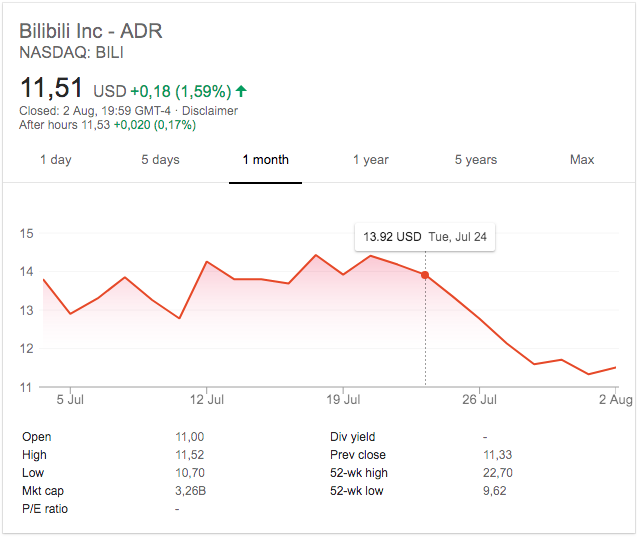
Screenshot of the drop in Bilibili’s stock price. Accessed August 3, 2018
Rumored competition
Baidu, which runs China’s biggest search engine, found that even unconfirmed competition can cause stocks to tumble. In a move which could mark its re-entry into the Chinese market, news broke this week that Google has plans to launch an Android app that could provide filtered results to users in China.
Baidu currently commands nearly 70 percent of China’s search market. Google shut down its search engine in China in 2010 over censorship concerns, giving up access to a vast market. China’s online population now exceeds 770 million, double the entire populace of the U.S. and more than that of Europe.
Baidu’s income is still highly dependant on ad revenue, which increased by 25 percent in the second quarter. Google’s return is clearly seen as a threat, causing Baidu’s stock price to fall from $247.18 on July 31 to $226.83 on August 2. This marks the most significant fall since the company announced the departure of its chief operating officer Lu Qi in May.
Steady decline
Nonetheless, all these losses seem insignificant in comparison to Tencent’s. The company saw its stock price increase by 114 percent in 2017, reaching a record high in January 2018. However, since then, the price has dropped by nearly $130 per share, eviscerating a considerable portion of its market value. In July alone, its stock price fell by 9.9 percent. The company’s devaluation tops Facebook’s $130 billion rout following its earnings call last month.
In April, the company lost over $20 billion in value after South African investment and media firm Naspers — an early and loyal backer — announced it was trimming its stake by two percent. Additionally, Martin Lau, the company’s president, sold one million of his shares in the company. This, added to the Naspers sale and warnings of margin pressure, led to a loss of $51 billion in market value.
“Investors are increasingly pricing in lower expectations for Tencent’s interim results,” Linus Yip, a strategist at First Shanghai Securities in Hong Kong, told Bloomberg.
Yip expects the downward trend to continue, and not just for Tencent. “Overall, tech companies are facing a similar problem. They have been enjoying fast profit growth in the past few years, so it will be difficult for them to maintain similar growth in the future as the competition grows and some segments are saturated,” he said.
Read Full Article
Peloton raises $550M at a valuation of $4 billion
Peloton today announced its Series F funding of $550 million. That brings the total amount raised, according to CrunchBase, to $994.7 million. According to the announcement, this round puts Peloton’s valuation at $4 billion — it was just last May the company hit unicorn status.
TCV led the round with other participation in the round from Tiger Global, True Ventures, Wellington Management, Fidelity, NBCUniversal, and Kleiner Perkin, along with new investors – BlackRock, Franklin and Winslow Capital.
“We are truly honored to partner with TCV and with Jay Hoag personally,” said John Foley, founder and CEO of Peloton, in a released statement. “TCV’s reputation, experience, and involvement in businesses like Netflix, Spotify and Facebook will be invaluable as we build Peloton into one of the most unique and influential global consumer product and media companies of our day.”
The company previously closed a $325 million Series E, which was reportedly used to fuel expansion into the retail market. The company expects to use the latest round of funding to continue growing that sector and grow international.
Earlier this year, Peloton announced its second product, a connected treadmill, which the company still says will launch to consumers this call. The company also introduced a new membership product and opened several retail locations.
Read Full Article
Tim Cook to Apple staff: $1TR in shareholder value isn’t what drives us
How should you feel to know your employer is far, far richer than Croesus?
As Apple CEO Tim Cook tells it — in a memo to staff, obtained by BuzzFeed News, re: yesterday’s news that the computer company Steve Jobs founded back in 1976 is now worth more than $1,000,000,000,000 — you should feel A) pretty stoked that your labor has helped achieve a significant financial milestone but also B) know it’s not a success metric to get hung up about because it’s the passion for innovation and creation (not the towering mounds of gold) that really counts and so C) please, after taking a moment, remember to get back to work.
Here’s what Cook actually wrote to Apple’s global “team” of circa 123,000 employees:
Team,
Today Apple passed a significant milestone. At our closing share price of $207.39, the stock market now values Apple at more than $1 trillion. While we have much to be proud of in this achievement, it’s not the most important measure of our success. Financial returns are simply the result of Apple’s innovation, putting our products and customers first, and always staying true to our values.
It’s you, our team, that makes Apple great and our success is due to your hard work, dedication and passion. I am deeply humbled by what you do, and it’s the privilege of a lifetime to work alongside you. I want to thank you from the bottom of my heart for all the late hours and extra trips, all the times you refuse to settle for anything less than excellence in our work together.
Let’s take this moment to thank our customers, our suppliers and business partners, the Apple developer community, our coworkers and all those who came before us at this remarkable company.
Steve founded Apple on the belief that the power of human creativity can solve even the biggest challenges — and that the people who are crazy enough to think they can change the world are the ones who do. In today’s world, our mission is more important than ever. Our products not only create moments of surprise and delight, they empower people all around the globe to enrich their lives and the lives of others.
Just as Steve always did in moments like this, we should all look forward to Apple’s bright future and the great work we’ll do together.
Tim
Read Full Article
Samsung’s official launch video for the Galaxy Note 9 has also now leaked…
The official launch promo video for Samsung’s next flagship smartphone in the long-running Galaxy Note line — the Note 9 — appears to have leaked, with links to the video now cropping up on YouTube.
And via Twitter…
Samsung accidentally posted its Galaxy Note 9 into video to YouTube. Oops. pic.twitter.com/NfzikY4tLG
— Tom Warren (@tomwarren) August 3, 2018
The forthcoming phablet has been pretty comprehensively leaked already. And clearly hasn’t had a radical (cosmetic nor form factor) makeover. (This is not the fabled folding phone Samsung is slated to be working on for next year.)
The Note 9 will also be officially unveiled on August 9. So Samsung fans don’t have long left to wait for any last minute details they were keen to nail down.
But, in the few days remaining, the Samsung-branded video offers a more polished look at what’s going to be up for pre-order next week…
Samsung kicks off touting the power of the Note 9 — telling us it’s not just powerful but “super powerful” (leaked benchmarks have previously suggested a big performance boost); and with a bottoms-up ports & rear view pan that shows a 3.5mm headphone jack sitting in the frame — confirming my TC colleague Brian Heater’s eagle eye.
Also of note: A repositioned fingerprint sensor (now in a less stupid location below the dual lens camera housing).
Next, the video flips focus to a snazzy yellow (or is that gold?) S Pen stylus, which Samsung describes as “all new powerful”, before showing its physical button being pressed by an invisible force (human, we hope) which then does a spot of aimless doodling.
After this, Samsung moves to brag about the Note 9’s “all day battery” (which it’s confidently teased before — so the company looks to have put the Note 7 battery fiasco well and truly behind it), although the usual small print disclaimers warn about variable battery performance.
On the storage front, there’s a big bold claim of the device being “1 terabyte ready” — although this is on account of a 512GB SD card shown being pulled out of the expandable memory slot.
And in the small print displayed on the video at that point the company caveats that the 1TB claim is for 512GB models equipped with another 512GB in expandable memory (at the owner’s separate expense).
“The power to store more” [photos] “Delete less” [photos] is what the company’s marketing team has come up with to try to excite people over the utility of owning a smartphone that can have 1TB in storage capacity. i.e. if you stump up extra for the extra storage.
The video shows a camera roll chock-full of stock photos of pets, snacks and people. Hopefully Note 9 owners will find more creative things to do with 1TB storage.
Read Full Article
This 3D-printed camp stove is extra-efficient and wind-resistant
I love camping, but there’s always an awkward period when you’ve left the tent but haven’t yet created coffee that I hate camping. It’s hard not to watch the pot not boil and not want to just go back to bed, but since the warm air escaped when I opened the tent it’s pointless! Anyway, the Swiss figured out a great way to boil water faster, and I want one of these sweet stoves now.
The PeakBoil stove comes from design students at ETH Zurich, who have clearly faced the same problems as myself. But since they actually camp in inclement weather, they also have to deal with wind blowing out the feeble flame of an ordinary gas burner.
Their attempt to improve on the design takes the controversial step of essentially installing a stovepipe inside the vessel and heating it from the inside out rather than from the bottom up. This has been used in lots of other situations to heat water but it’s the first time I’ve seen it in a camp stove.
 By carefully configuring the gas nozzles and adding ripples to the wall of the heat pipe, PeakBoil “increases the contact area between the flame and the jug,” explained doctoral student and project leader Julian Ferchow in an ETH Zurich news release.
By carefully configuring the gas nozzles and adding ripples to the wall of the heat pipe, PeakBoil “increases the contact area between the flame and the jug,” explained doctoral student and project leader Julian Ferchow in an ETH Zurich news release.
“That, plus the fact that the wall is very thin, makes heat transfer to the contents of the jug ideal,” added his colleague Patrick Beutler.
Keeping the flames isolated inside the chimney behind baffles minimizes wind interference with the flames, and prevents you having to burn extra gas to keep it alive.
The design was created using a selective laser melting or sintering process, in which metal powder is melted in a pattern much like a 3D printer lays down heated plastic. It’s really just another form of additive manufacturing, and it gave the students “a huge amount of design freedom…with metal casting, for instance, we could never achieve channels that are as thin as the ones inside our gas burner,” Ferchow said.
Of course the design means it’s pretty much only usable for boiling water (you wouldn’t want to balance a pan on top of it), but that’s such a common and specific use case that many campers already have a stove dedicated to the purpose.
The team is looking to further improve the design and also find an industry partner to take it to market with. MSR, GSI, REI… I’m looking at you. Together we can make my mornings bearable.
Read Full Article
Apple Is Now Worth $1 Trillion and Counting

Apple has become the first public company in the world to have a market cap of over $1 trillion. The Cupertino-based company crossed the magic milestone on Thursday (August 2, 2018) when its share price hit $207.05 after posting strong financial results.
A (Very) Brief History of Apple Inc.
Apple has a complicated history. It was founded by Steve Jobs and Steve Wozniak in 1976, and made its name selling personal computers. Jobs was ousted in 1985, after which he formed NeXT. Apple acquired NeXT in 1996, bringing Jobs back into the fold.
The 2000s saw the introduction of Mac OS X, the iPod, iTunes, and the iPhone. All of which helped the company blossom into the world-beating brand we know and (sometimes) love today. Jobs died in 2011, but the company has continued to grow under Tim Cook.
Apple Is Considerably Richer Than You
When Apple launched its IPO in 1980 its share price was $0.51. In 1985, when Jobs left the company, the share price dropped to just $0.27. In 2001, with the launch of the iPod, the share price rose to $1.30. And (minus a few blips) it has continued to rise ever since.
Apple just became a $1 Trillion Dollar company.
Lesson in there. pic.twitter.com/8G4Jk2FyDc
— ERIK FINMAN (@erikfinman) August 2, 2018
With its share price hitting $207.05, Apple became a trillion-dollar company 42 years after it was formed. And it’s pretty much all thanks to the iPhone. While sales have only grown by 1 percent, increased profit margins means revenue grew by 20 percent.
Amazon and Alphabet Are Closing In Fast
This is a special moment for Apple. And while the company’s share price may drop, taking the company’s market cap back below $1 trillion, this is still a remarkable achievement for a company whose fortunes have waxed and waned over the years.
Apple is highly likely to be joined in the trillion-dollar company club by Amazon and Alphabet (Google’s parent company), both of which are closing in fast. And while the number is meaningless in the big scheme of things, it surely deserves a round of applause.
Image Credit: Marco Verch/Flickr
Read the full article: Apple Is Now Worth $1 Trillion and Counting
Read Full Article
Google slowly lifting ban on addiction center ads after adding vetting process
Google will soon allow ads to run on addiction-related keywords and phrases after a nearly year-long ban instituted to crack down on shady providers cashing in on vulnerable patients. A small group of providers vetted by a third party have been approved by the company to appear in results for searches like “help quitting pills” or “meth addiction.”
The ban on these ads was rolled out in stages starting in September of last year in the U.S. and going global in January. It was provoked by a series of reports showing that people looking for help were being essentially traded like commodities and sent to incredibly expensive “addiction centers” that often provided little recovery help at all.
At the time Google pledged to keep the ban in place until it could find a way to reintroduce ads safely and ethically, and it has taken its time doing so. All addiction-related ad words were shut off completely, and while this introduced problems of its own (people searching for “help quitting pills” don’t want the WebMD page for addiction) it was probably the only logical choice.
Following this Google partnered with LegitScript, a Portland company that specializes in verifying medicine-related businesses online. It has a 15-point checklist to make sure businesses are licensed and compliant, list medications and treatment plans, demonstrate qualifications and professionalism (i.e. not a quack operating out of their living room), have no shady history or what have you, and so on. The whole list is here.
Only recovery and addiction centers vetted by LegitScript will be allowed to run ads against addiction-related queries on Google.
Recovery Centers of America, which has a handful of facilities around the country, is one of the first wave of approved advertisers.
“What they were trying to get rid of were these ‘lead aggregators’ that were posing as treatment centers, but were basically selling the patients,” said RCA’s director of marketing strategy and operations, Grant McClernon. “They wanted people who were operating under state scrutiny, providing real treatment.”
“It was a wild wild west out there,” added Bill Koroncai, the company’s director of communications. “So we support Google’s work to weed out the unethical providers in the industry.”
They explained that Google originally planned to greenlight 30 providers — which is to say facilities, of which provider like RCA might have just one or dozens — but they were inundated with applications and had to expand the first wave of the program to closer to 100.
That’s not necessarily indicative of a rush on Google’s part; it seems more likely that the larger number turned out to be the realistic one if most regions and most needs were to be served. With 30 facilities you wouldn’t even have one in every state.
Addiction treatment providers won’t be treated any differently from other keyword purchasers, except that there will have to be a yearly check-up process through LegitScript to make sure they’re still worthy of being included.
It’s probably wise that Google didn’t get into the vetting process itself; this sets an easier precedent for the ad giant in that when conflicts like this one come up, it doesn’t have to hire a specialized team dedicated to combating fraud in that specific domain.
Ads should start running soon. I’ve contacted Google to confirm for confirmation and more information.
Read Full Article
How to Freeze a Part of a Word Document for Easy Reference

Bouncing back and forth between two or more parts of a large Microsoft Word document involves a lot of vertical scrolls—and it isn’t fun. Anyone working on a large Microsoft Word document will find it annoying, especially when one part of the document is needed as a frequent reference while you work.
So what do you do? Do you open two instances of the same document and Alt + Tab between them? Or is there a feature in Microsoft Word that makes it easier?
Actually, yes, such a feature exists. Everyone knows you can freeze rows and columns in Microsoft Excel, but did you know that Microsoft Word has its own ability to freeze sections of a document? Quite useful for comparing sections of the same document, or comparing multiple documents at the same time.
How to Freeze Part of a Word Document
Here’s a common scenario: You are writing a lengthy professional report in Word with many different sections. Some sections refer to a previous part, which makes you scroll up and down repeatedly. You may also need to copy-and-paste text or graphics between sections.
Microsoft Word can split the window and allow you to view different parts of the same document without scrolling too much.
- Open your document in Word.
- Go to the Ribbon> View tab > click on Split.
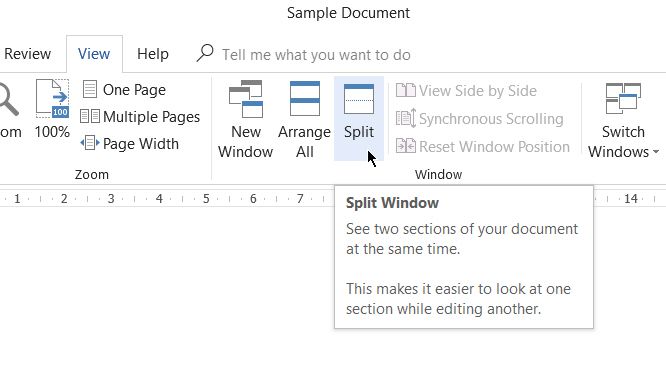
- The document is now divided into two panes with a movable dividing line in between. Adjust the relative sizes of the panes with the mouse. Move the mouse pointer to the dividing line, and when you see the split pointer, click and drag the dividing line to a new position.
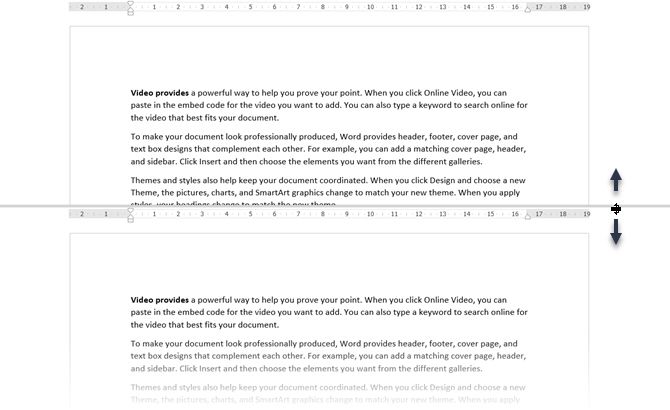
- To activate a split copy, just click anywhere inside it. With the document split into two panes, you can work on one pane while keeping the other pane static or “frozen” for easy reference. In the above figure, the top pane is kept static while the bottom pane becomes the work area.
- The Split can be removed by: clicking on View > Remove Split, dragging the dividing line to the top or bottom edge of the window, or double-clicking on the divider line.
Working With Split Documents in Microsoft Word
Here are a few important points to remember when you have split the document screen into two parts:
- After creating the split, click in the pane that you want to change, and then select a different layout on the View tab.
You can treat the two panes as two separate windows and use the different View commands to change the layout of the sections. For instance, you can keep the top pane in the Print layout, while working on the Web layout in the bottom pane. Or keep the top pane in the Outline view and the bottom one in the normal Print layout. - It’s the same document, so any layout or formatting changes will affect both the copies. For example, if you make some text bold in the upper copy, the same text will automatically become bold in the lower copy too.
- You can set different zoom levels for the split sections. This is helpful for the elderly or even if you want to zoom into charts and tables.
- You can use the bottom split like a Print Preview screen. Arrange the bottom screen to show multiple pages (View > Multiple Pages) to get a nice overview of how your document is designed.
What If You Want to Split a Word Document Vertically?
In short, you are out of luck because Word only allows the horizontal split in the same document. But there’s a quick and dirty workaround you can use.
- Open two separate instances of the same document. In Microsoft Word 2016, open the first document. Then, go to File > View > New Window.
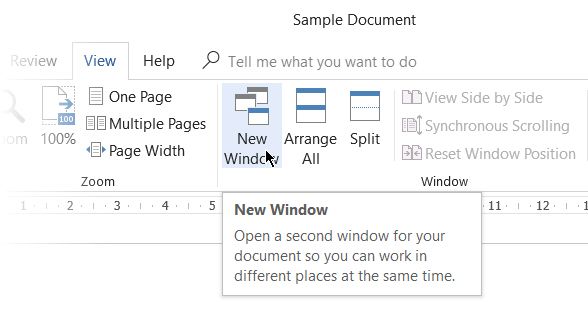
- Select View > View Side by Side. The same document will open in an adjacent window and allow you to work side-by-side mimicking a vertical split.
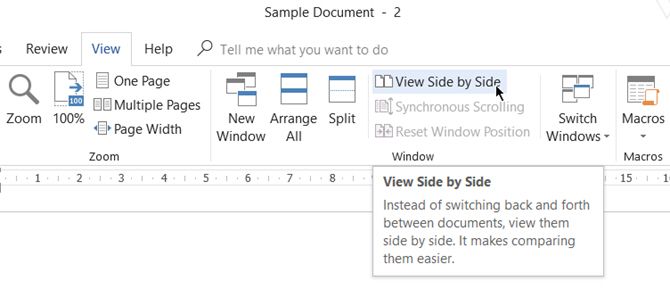
- If you scroll up or down, the other scrolls as well. If you want to freeze one and just scroll the other select Synchronous Scrolling to turn it off.
Improve Your Microsoft Word Experience
The Split button can make life a lot easier when you have a wordy document on your hands. Try this button the next time you decide to make a table of contents in Word. You don’t have to drag the scrollbar up and down to refer to each part of it. Or open and switch windows. Use the features in the View tab to make your reading and proofreading job easier.
Read the full article: How to Freeze a Part of a Word Document for Easy Reference
Read Full Article
What Is CGI Animation?

Have you ever watched a Pixar film and wondered what it is about CGI animation that makes for some of the best animated movies? Actually, most of the time, CGI is invisible. If it’s done well, you won’t even realize it’s CGI.
If you’re older, you probably remember Scooby-Doo or The Flintstones occupying your Saturday mornings. But the animations of the 1970s and 1980s are nothing like they are today. By the 2000s, cartoons started looking just a bit more real.
What is CGI animation, exactly? And what is it about CGI animation that gives the characters and overall imagery more realism? And how has the technology evolved? In this article, we’ll answer what you want to know.
A Brief History of Animation
Many decades ago, animators were artists who drew pictures by hand. Traditional animation consisted of a whole team of animators who drew and colored images on a “cel”—transparent celluloid sheets on top of a background image to create a multi-layered frame.
As a result, segments of an image could change from frame to frame without redrawing the entire picture. By manipulating the drawings in each layer between frames, animators would create what many adults today remember as the traditional cartoon.
In a well-known use of animation, the original Star Wars trilogy received a digital makeover after all three prequel movies launched.
Many of the (fairly controversial) changes to Star Wars digital versions were done using this approach, but with computers. They created multiple frames of images each second in order to generate the visual effect of animation.
The Digital Precursor to CGI
As computing processing power increased and the complexity of graphics software grew, animations became more complex than traditional artists could compete with. One of the first popular expositions of CGI was in the late 1990s, with the introduction of the GIF.
GIFs package together a series of static images which progress from frame to frame at a set time interval.

In that sense a GIF is similar to a slideshow—just an extremely specific one. The size of a GIF is typically tiny, reflected in their usually low-quality images. This allowed them to gain popularity when internet speeds were limited.
Now, this is all grade school-level compared to the impressive feats of 3D CGI animation technology today. How did we get from 1990s computer animation to the sort of IMAX 3D animated movies you love to watch? The simple answer is processing power.
CGI Technologies Enter the Modern Era
As a result of Moore’s Law, the cost of computing has gone down while the amount of processing power available has increased. This allows animators to harness increasingly higher-powered computers to create their models.
It became possible for animators to place 3D models in three-dimensional space and make them interact with each other. Gone are the layers from the 2D approach, and in their place came increasingly smaller sections of objects. This level of detail allowed for the realistic output of modern CGI animation.
One of the most notable uses of CGI in the 1990s was in James Cameron’s Terminator 2: Judgement Day. The Terminator T-1000 robots were given a liquid metal form that allowed them to morph into anything they touched.

Alongside this, a small film production studio was gearing up to change the way people make animated films. Headed by the former Disney animator John Lasseter, Pixar created some of the first realistic CGI animations with Toy Story in 1995.
The success of the film and Pixar’s magic animation paved the way for Steve Jobs, who was an investor in the company, to return to Apple and eventually create the iPod.
CGI Becomes Affordable and Goes DIY
The more affordable cost of computing was one of the most profound parts of the technological revolution. This lower cost means that it’s now possible for anyone with a computer and some time to create their own music, writing, and digital animations.

One of the first pieces of CGI software to enter the mainstream was Autodesk’s AutoCAD in 1982. Back then, it wasn’t feasible to run AutoCAD yourself at home.
However, now with its Maya CGI software, you can use the company’s 35 years of experience to create your own digital animations. It’s far from the only option though; the free and open-source Blender provides another option.
Video platforms like YouTube and Vimeo have allowed creators to easily upload and share their work. You can find short professional-grade CGI-based films made entirely with free software. Using a combination of tools like Blender, GIMP, Inkscape, Source Film Maker, and similar, it’s possible to create works of art and video which would have been unimaginable 30 years ago.
CGI: A Revolution Colored by Nostalgia
3D CGI animation has evolved from basic cartoon animation into simulated, highly realistic worlds. By combining physics with art, CGI slices up the world into the smallest segments possible and creates models of how those tiny real-world parts move in a stunningly realistic animated world.
Some lament the decline in traditional animation, and some even feel that CGI is doing more harm to movies than good, but success is hard to argue with. Early CGI releases like Toy Story were such a success that the takeover was all but certain.
Traditional animation will always have its place, with classic cartoons held in reverence. Netflix has plenty of classic-styled cartoons aimed at adults if you’re looking to recapture the art form.
Read the full article: What Is CGI Animation?
Read Full Article
The Moto Z3 will get 5G via mod
Say what you will about the success or general usefulness of the Moto Mod line — Motorola keeps plugging away. The company currently offers 17 Mods with an 18th on the way, bringing one of the most interesting case uses yet.
Along with the new Moto Z3 handset, Motorola unveiled a Mod that will bring 5G connectivity to the entire line via Verizon’s nascent network. Due out early next year for an undisclosed sum, the new Mod presents an interesting work around to the pains of introducing a next generation network to a handset.
With this backdoor approach, the company is able put the Z3 up for sale on August 16th, and work another half-year or so to get its ducks in a row on the 5G front. Perhaps Verizon’s 5G coverage map will be a bit more dense by then, though at present, the company has only announced three cities — Houston, Los Angeles and, oddly, Sacremento. A fourth unnamed city is also on tap to get coverage by end of year.
At very least, this lets Motorola tout the claim of being one of — if not the — first phones to offer the technology to U.S. customers. The company also claims that putting this tech directly into the phone would have been much more resource intensive than just sticking it and an extended battery inside the mod.
I’m not sure how much I buy that line of reasoning, but it certainly helps keep the cost of the handset down — the new Z3 will be available for $480 unlocked. The company has long focused on providing budget options for users, and that’s certainly the case here, helped along by some good — but last generation — silicon like the Snapdragon 835.
Motorola also likely didn’t feel confident that most users would be willing to take the plunge on a 5G phone at this early stage. As for the phone itself, it looks pretty similar to the recently introduced Moto Z3 Play in most respects. There’s a six-inch display, a 3,000mAh battery and dual-cameras with depth sensing and Google lens built in. No word yet on whether Verizon will eventually bundle the phone with that new Mod.
Disclosure: Verizon owns Oath, Oath owns TechCrunch.
Read Full Article





